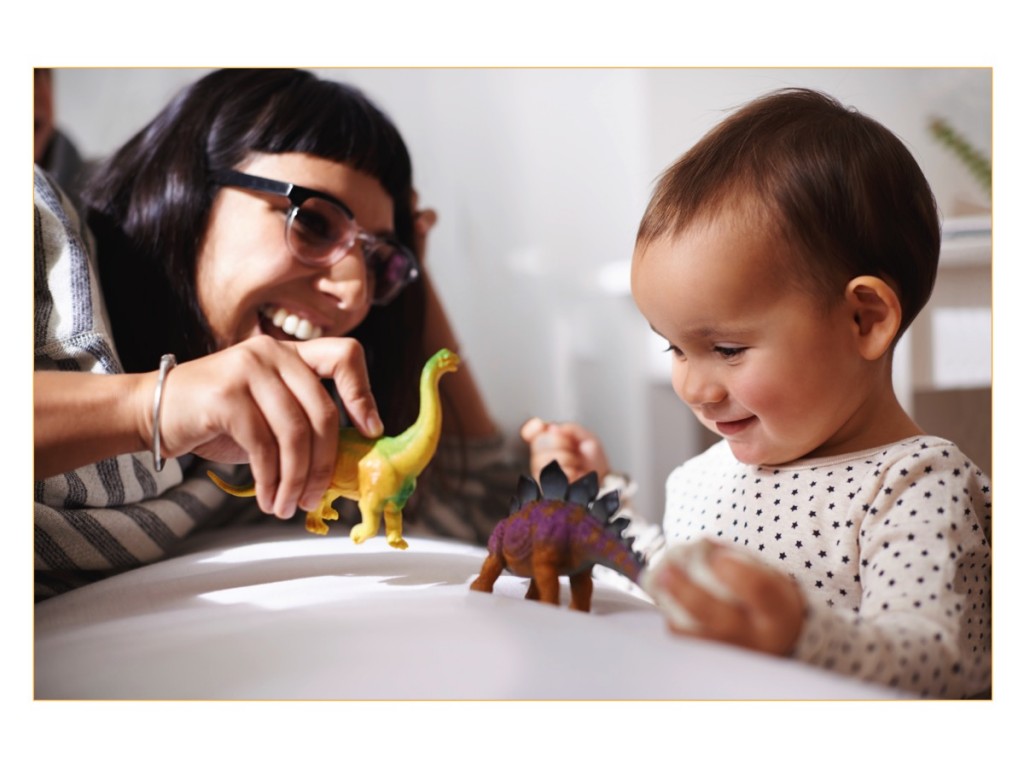
Adults can’t always time their speech to label what an infant is looking at. That would be impossible! So what happens when a child is looking at one object while an adult looks at and labels a different object? Like in the photo, the mom says, “it’s yellow”, just as her daughter looks down at the purple dinosaur.
To answer this question, researchers taught 16- to 19-month-old infants made-up labels for new objects. Sometimes the infants heard the new label (e.g., “It’s a peri”) while looking at the same object as the adult. Other times infants heard the novel label (e.g., “It’s a toma”) while looking at a different object than the adult. Then infants played a game to test whether they understood the new labels. For example, infants were shown pairs of toys and asked to point to the “toma”.
All the infants were good at connecting the new label to the correct object when they were looking at the same object as the adult. When the adult labeled an object that the infant wasn’t looking at, the results changed. Only the older infants correctly connected the label to the object the adult was looking at and labeling. By 18 months, infants understand that the label applies to the object the adult is looking at.
Eye gaze is an important nonverbal skill that advances language development. This illustrates how social, cognitive, and language development are all intertwined in child development.
-
- Autism Spectrum Disorder (ASD)
- a developmental disorder that impairs a child’s social and communication skills
- Directing attention
- using eye gaze or a gesture to direct another person’s attention to an object or event
- Following attention
- following another person’s eye gaze or gesture
- Gaze following
- looking at what another person is looking at
- Joint attention
- shared attention between social partners to an object or event